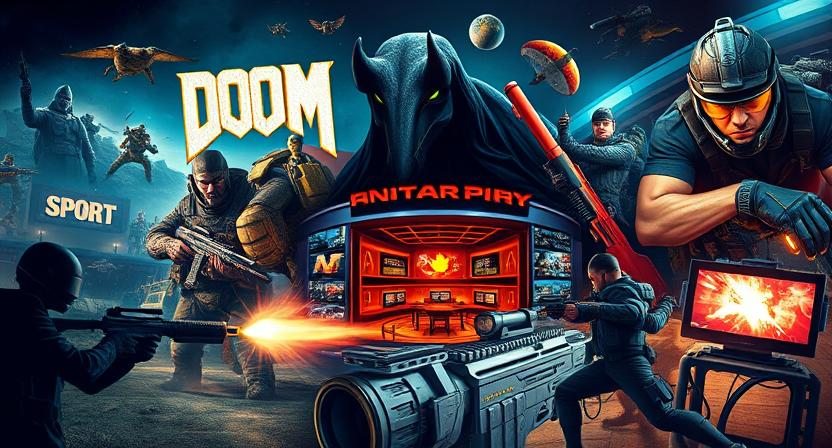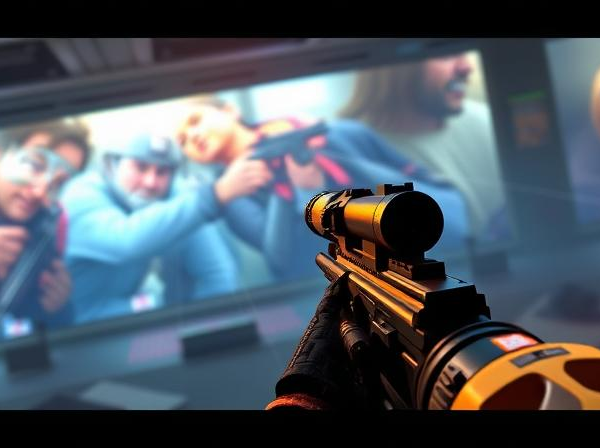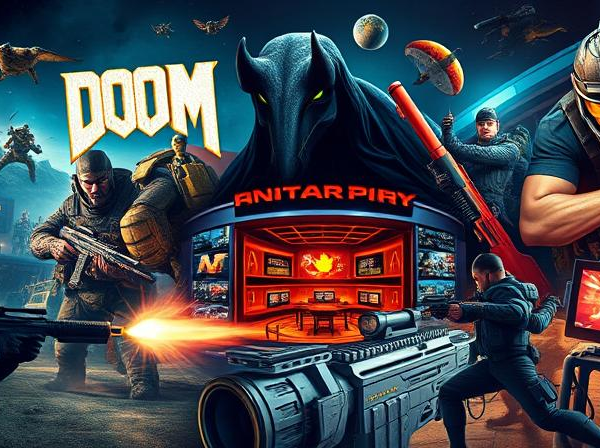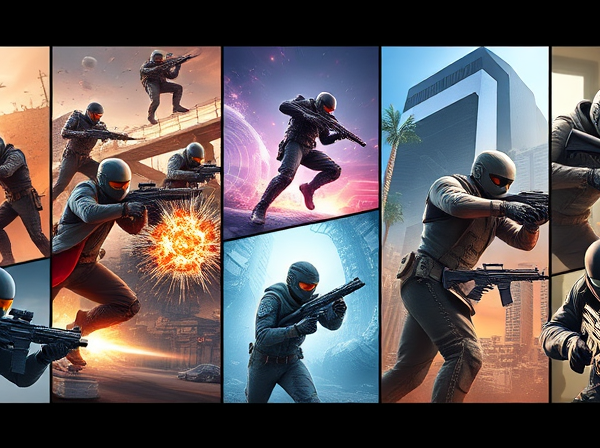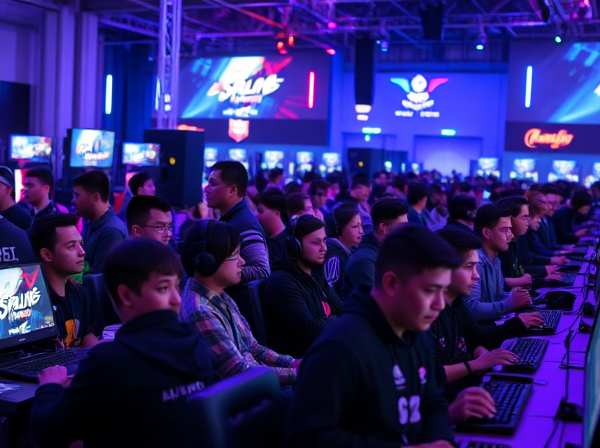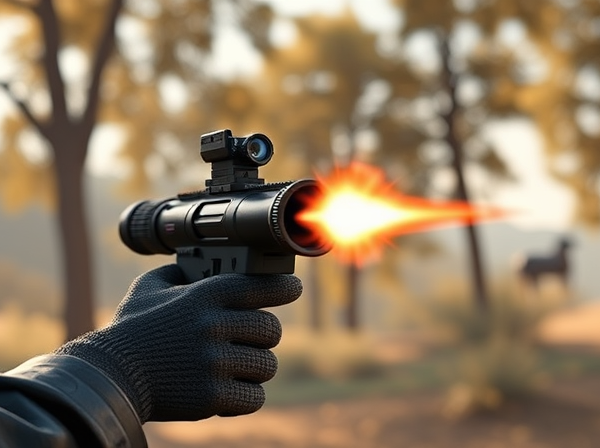The Impact of FPS Games on the Gaming Industry
The Evolution of First-Person Shooter Games

First-person shooter (FPS) games have come a long way since their humble beginnings. Beginning in the 1970s and 1980s with titles like Maze War and Spasim, the genre has steadily evolved over the years, thanks to advancements in technology and the growing demand for immersive gaming experiences. These early FPS games laid the groundwork for what would become a thriving genre, setting the stage for the future of gaming.
As gaming hardware and software continued to advance, so too did the capabilities and complexity of FPS games. The 1990s saw the release of iconic titles such as Doom and Wolfenstein 3D, which introduced players to fast-paced, first-person action with intricate level designs. These games revolutionized the gaming industry, showcasing the potential of the FPS genre and paving the way for future innovations. With the introduction of multiplayer functionality, FPS games gained even more popularity, allowing players to compete against each other in virtual arenas and further fueling the evolution of the genre.
Pioneering FPS Titles and their Influence on the Gaming Industry
One of the pioneering FPS titles that had a significant influence on the gaming industry is Doom. Developed by id Software and released in 1993, Doom revolutionized the gaming landscape with its immersive first-person perspective and fast-paced gameplay. The game’s success can largely be attributed to its novel approach to graphics, sound design, and multiplayer functionality. Doom not only popularized the FPS genre but also served as a benchmark for future game developers, inspiring a wave of similar titles and paving the way for the growth of the gaming industry.
Another game that played a crucial role in shaping the FPS genre and influencing the gaming industry is Half-Life. Developed by Valve Corporation and released in 1998, Half-Life introduced narrative-driven gameplay and advanced AI mechanics, setting a new standard for immersive storytelling in FPS games. The game’s innovative approach to level design, physics, and interactive environments created a sense of realism that was unprecedented at the time. With its compelling story and groundbreaking gameplay mechanics, Half-Life not only left a lasting impression on players but also influenced future game developers, pushing the boundaries of what could be achieved in the FPS genre.
The Rise of Competitive Gaming through FPS Titles

The rise of competitive gaming through first-person shooter (FPS) titles has been a significant phenomenon in the gaming industry. FPS games, with their intense action and immersive gameplay, have always had a competitive element to them. However, it wasn’t until the advent of online multiplayer that competitive gaming truly took off.
Online multiplayer paved the way for players from all around the world to compete against each other in real-time. FPS titles like Counter-Strike, Call of Duty, and Overwatch became breeding grounds for skilled players to showcase their talent and compete for recognition. The emergence of organized tournaments and leagues further fueled the growth of competitive gaming, with players and teams competing for substantial prize pools and the title of being the best in the world.
This rise in competitive gaming through FPS titles has not only created a new avenue for professional players but also a passionate fan base. Spectators can now enjoy the high-stakes matches from the comfort of their own homes, thanks to live streaming platforms and esports events. The skill, coordination, and strategies exhibited by top FPS players have captivated audiences, leading to a surge in viewership and the establishment of dedicated esports communities. As the popularity of competitive gaming continues to soar, it is clear that FPS titles have played a pivotal role in shaping the landscape of this rapidly evolving industry.
FPS Games as Catalysts for Technological Advancements in Gaming
FPS games have played a significant role in driving technological advancements within the gaming industry. As games like Doom and Quake surged in popularity during the 1990s, developers were compelled to push the limits of hardware capabilities to meet the demands of these visually-intensive and immersive experiences. This led to the development of more powerful processors, improved graphics cards, and enhanced sound systems, which not only revolutionized the FPS genre but also had a profound impact on gaming as a whole. The need for faster rendering, higher frame rates, and better overall performance pushed manufacturers to innovate and create cutting-edge technologies to keep up with the demands of FPS games and their players.
Moreover, the push for technological advancement in FPS games also influenced the development of input devices and controls. The traditional keyboard and mouse setup was the preferred control scheme for many FPS players, offering precise aiming and reaction times. However, as the genre expanded and attracted a larger and more diverse player base, developers began exploring alternative control options. This led to the introduction of console controllers designed specifically for FPS games, featuring ergonomic designs, enhanced analog sticks, and customizable buttons. The continuous refinement of control schemes and input devices in FPS games further influenced the development of peripherals and accessories for other gaming genres, ultimately enhancing the overall gaming experience for players across different platforms.
The Cultural Impact of FPS Games on Society

First-person shooter (FPS) games have undeniably made a significant cultural impact on society. These games, with their immersive gameplay and realistic graphics, have not only captured the attention of gamers but have also influenced various aspects of popular culture. One noteworthy aspect is the way FPS games have shaped the entertainment industry. With their intense action and adrenaline-pumping gameplay, FPS games have inspired the creation of movies, television shows, and even books that aim to replicate the excitement and thrill experienced in these virtual worlds. This cross-pollination of media has not only expanded the reach of FPS games but has also solidified their status as a cultural phenomenon.
Moreover, FPS games have also sparked discussions on the effects of violent content in media. As these games often involve combat and shooting, concerns have been raised regarding their potential impact on players, particularly on impressionable individuals such as children and adolescents. This debate has led to a deeper exploration of the relationship between virtual violence and real-world aggression. While research on this topic remains inconclusive, it has prompted discussions on responsible game design and the inclusion of content warnings in FPS titles. Additionally, it has also highlighted the need for parental guidance and awareness when it comes to monitoring children’s exposure to such games.
FPS Games and the Transformation of Multiplayer Gaming
In recent years, first-person shooter (FPS) games have played a significant role in transforming multiplayer gaming. The immersive nature of FPS titles, coupled with their intense action and competitive gameplay, has revolutionized how players engage with one another in the gaming world. With the advent of advanced technology and internet connectivity, FPS games have been at the forefront of enabling players to connect and compete with others from around the globe.
One of the key transformations brought about by FPS games in multiplayer gaming is the shift towards team-based gameplay. Gone are the days of solo missions; now, players are encouraged to collaborate and communicate effectively within their teams to achieve victory. This shift has led to the rise of cooperative gameplay and the development of strategies that rely on teamwork and coordination. FPS games have nurtured a sense of camaraderie among players as they work together towards a common goal, fostering a more social and interactive gaming experience.
The Role of FPS Games in Shaping Esports

Esports, or competitive video gaming, has rapidly grown into a global phenomenon, captivating millions of fans and players alike. Within the realm of esports, first-person shooter (FPS) games have played a pivotal role in shaping and popularizing the competitive gaming landscape. FPS games, with their fast-paced action and strategic gameplay, provide an exciting platform for players to showcase their skills and compete against each other in virtual arenas.
One of the key reasons why FPS games have had such a significant impact on esports is their accessibility. Unlike some other genres that may require extensive knowledge or experience to fully understand and appreciate, FPS games are relatively easy to grasp for both players and spectators. The simplicity of the core mechanics, such as aiming and shooting, allows for a level playing field where skill and strategy take center stage. This accessibility has helped FPS games like Counter-Strike: Global Offensive and Overwatch to attract a vast player base and build a thriving esports scene. As a result, these games have gone on to host prestigious tournaments with massive prize pools, further fueling the growth and recognition of esports on a global scale.
FPS Games and the Growth of Online Gaming Communities
The growth of online gaming communities can largely be attributed to the popularity of first-person shooter (FPS) games. These games have provided players with an immersive and interactive experience, enabling them to connect with fellow gamers from all around the world. Through the power of the Internet, FPS games have become a catalyst for the creation of online communities that foster camaraderie, competition, and collaboration.
One of the key factors that have contributed to the growth of online gaming communities is the accessibility of FPS games. With the advancements in technology, these games are now readily available on various platforms, such as consoles, computers, and even mobile devices. This accessibility has opened up a whole new world of gaming possibilities, allowing players to easily connect with others who share their passion for FPS titles. Whether it’s teaming up with friends for a cooperative mission or competing against strangers in intense multiplayer battles, FPS games have created a platform for gamers to come together and form lasting connections.
FPS Games and their Influence on Game Design and Mechanics

FPS games have had a profound impact on game design and mechanics. These first-person shooters introduced innovative and immersive gameplay elements that have become staples in the gaming industry. One notable influence is the implementation of realistic and dynamic environments. FPS titles like “Half-Life” and “Doom” revolutionized game design by introducing interactive elements within the game world, allowing players to manipulate objects and engage with their surroundings. This level of interactivity added a new dimension to gameplay, making it more engaging and challenging for players.
Furthermore, FPS games have also influenced the development of complex and realistic weapon systems. In games like “Call of Duty” and “Battlefield,” players can choose from a wide range of weapons with different attributes and functionalities. This not only adds strategic depth to the gameplay but also encourages players to experiment with different loadout combinations, further enhancing the overall gaming experience. Additionally, the introduction of weapon customization options in FPS games has allowed players to personalize their arsenal, adding another layer of depth to gameplay and fostering a sense of ownership. These innovations in game design and mechanics have undoubtedly shaped the way games are created and played, leaving a lasting impact on the gaming industry as a whole.
The Future of FPS Games and their Potential Impact on the Gaming Industry
The future of FPS games holds immense potential to shape and revolutionize the gaming industry. As technology continues to advance at an unprecedented rate, we can expect FPS games to take advantage of these innovations to deliver an even more immersive and realistic gaming experience. Virtual reality (VR), for instance, has already made significant strides in the gaming world, and it is only a matter of time before it becomes a staple in FPS games. Imagine being fully immersed in a virtual battlefield, with the ability to physically move and interact with the game environment. This level of immersion has the potential to completely redefine the way we play and experience FPS games.
Additionally, the future of FPS games will likely see a shift towards more expansive and interactive open-world environments. With the rapid advancements in processing power and game engine technology, developers will have the freedom to create vast and realistic game worlds that are not limited by hardware constraints. Players can expect more dynamic and lifelike environments, populated by intelligent NPCs and offering a wide range of activities and missions. This shift towards open-world gameplay will provide players with a greater sense of freedom and agency, allowing for even more diverse and personalized gameplay experiences. In conclusion, the future of FPS games holds exciting possibilities, and gamers can look forward to a new era of immersive and expansive gameplay experiences that push the boundaries of technology and storytelling.

